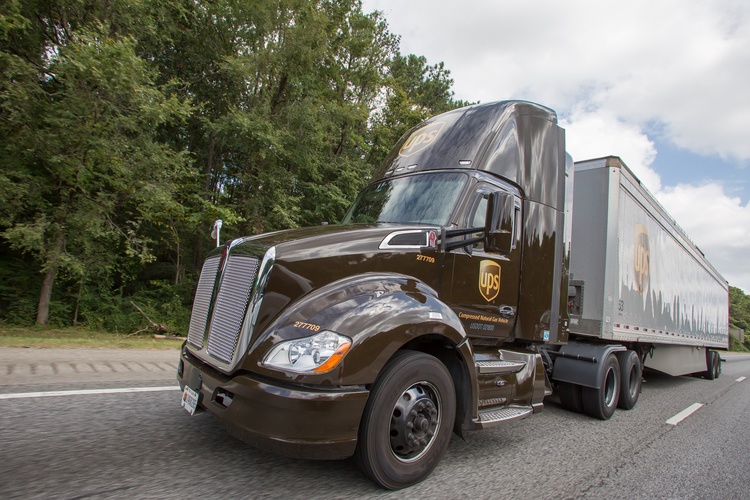As you shop, go to a restaurant, or watch the delivery man drop off boxes at your home, you come into contact with many recognizable colors and logos every day. Many of these signs, designs, and symbols are trademarked, meaning that they are considered to be the intellectual property of that company. In some cases, brands have also adopted a signature color that is so closely associated with their products or services that it has become part of their branding. Did you know that some of the most familiar colors you see on brands may also be trademarked?
Can Colors Be Trademarked?
Most brands usually stick with trademarking their logos, ensuring that no other company can make a similar or competitive logo. However, for brands where a particular color is associated with a store or product, such as Home Depot or Caterpillar, the color itself may be trademarked, preventing similar companies from using the color as part of their logos, background colors, or functionally identifiable markings. These “trademark colors” are a unique form of trademark protection, allowing companies to build brand recognition around specific hues. For instance, Coca-Cola has successfully trademarked its iconic Coca-Cola Red as a part of its branding. This form of trademark protection helps in establishing a secondary meaning where the public recognizes that color as being part of a brand’s identity.
If you’re interested in exploring the possibility of your brand, read more in our full explanation on trademarking a color.
Trademarking a color was made possible due to a pivotal case, Qualitex Co. v. Jacobson Products Co., which established that a color could indeed function as a trademark if it achieved distinctiveness and was tied to a specific product. If you’re interested in exploring the possibility of your brand using a trademarked color, read more in our full explanation on trademarking a color.
Before the 1980s, the United States did not recognize a color as a brand. However, a 1984 ruling by the U.S. Court of Appeals in Washington changed this thanks to a campaign by Owens-Corning. This forever cemented the company’s right to its identifiable shade of pink in the insulation sector. This specific color pink has become synonymous with the Owens-Corning brand, demonstrating how color can be intertwined with brand identity. When a color is trademarked, companies in other, non-competing sectors can still use the same shade for other purposes, but competitors may not.
Ten Popular Examples of Trademarked Colors
Today, there are many examples of brands that have trademarked a single color or a combination of colors. Here are just a few examples:
1. Owens-Corning Pink
As the first brand to trademark a color successfully, Owens-Corning set the stage for future trademarks with its Think Pink Campaign. Today, many people still recognize insulation materials bearing this light shade of pink. Owens-Corning’s color pink illustrates how a signature color can solidify brand recognition. The pink also matches perfectly with the Pink Panther, which Owens-Corning licenses for its use. This trademark was successfully upheld in 2011 against an insulation company based in the United Kingdom. (Read more in this full article on Owens-Corning Pink.)

2. UPS Brown
If a large, dark brown truck pulls down your street, you most likely know that someone is getting a delivery. United Parcel Service, or UPS, has trademarked that shade of brown since 1998, although the trucks have been painted the hue known as Pullman Brown since 1916. Although the shade was once thought to be luxurious, today it is more associated with a utilitarian service that millions of people and businesses across the United States use every year. (Read more in our full piece on UPS Brown.)
3. Fiskars Orange
Fiskars scissors are known for being among the sharpest, strongest, and most dependable scissors around, and they have cemented their place in most individuals’ minds with their insistence on using a pumpkin-like shade of orange for their handles, which they have used since 1967. Fiskars has turned this orange into its own branding tool, a clear example of how distinctiveness can protect a brand. The color has been trademarked in Finland where Fiskars got its start since 2003, as well as in the United States since 2007.
4. Tiffany Blue
If you have ever opened a jewelry box featuring a bright robin’s egg blue, you have probably known that you were in for a sweet surprise. The luxurious jewelry brand Tiffany & Co. has long been associated with that color, having used it since 1845. This makes it one of the oldest iconic colors associated with elaborate weddings and expensive gifts. Tiffany Blue, also known as Pantone 1837, is a prime example of a color that carries significant branding weight. The color has been trademarked since 1998. (You can read more on the Tiffany Blue trademark.)
5. Barbie Pink
Barbie first came onto the scene in 1959 and has been associated with a vibrant medium pink color ever since. However, this color trademark is not limited to merely the iconic doll. Instead, the color is trademarked by Mattel across a wide variety of over 100 categories, being used on bubble bath bottles and other Barbie-themed merchandise. The exact shade of pink is known as Pantone 219C.
6. T-Mobile Magenta
A similar but brighter pink color known as Process Magenta has been trademarked by T-Mobile for years. This trademark has been held up in courts several times as rival companies have attempted to make this shade their own. In one notable case, T-Mobile successfully defended its color trademark against AT&T, showing how serious trademark infringement can become when a brand’s color is at stake. (You can read more in our full piece on T-Mobile magenta.)
7. 3M Canary Yellow
Although Post-It notes come in nearly every color of the rainbow these days, the most common color associated with them is the light canary yellow seen in thousands of offices across the country. The success of 3M’s yellow colors shows how even practical items can benefit from color trademark protection. This light yellow is now used in a variety of stationery and office products made by the parent company 3M.
8. Target Red
Although many companies use red in their logos, Target has trademarked its bright shade of red along with its recognizable logo for use in retail. While other brands can use red, with Christian Louboutin famously doing so on the soles of the brand’s shoes and Coca-Cola using it on its popular drinks, competing brands cannot do so. Target’s use of red showcases the importance of maintaining strong branding through consistent color use. (Read more in our full piece on Target Red.)
9. John Deere Green and Yellow
Unlike the other companies that have been listed, John Deere has actually trademarked a color combination of green and yellow. The brand could not trademark the color green alone because this is known as a functional color and is the color of the grass and crops on which the tractors and farm machinery work. Combining colors like John Deere’s green and yellow adds another layer of distinctiveness that prevents competitors from infringing on its branding.
10. Cadbury Purple
If you ever see candy wrapped in a package that’s the color purple, you can rest assured that it is from the Cadbury brand. The color, known as Pantone 2685C, was trademarked for Cadbury in 1995. However, Cadbury’s journey to secure trademark protection for its signature purple has faced challenges, particularly from Nestle, illustrating how difficult color trademarking can be. Since then, the color has seen many legal ups and downs, and Cadbury can only continue to protect this color through trademark protection and secondary meaning. (You can learn more in our full article on Cadbury Purple.)
Wrapping Up
As you can see, certain brands are associated primarily with a singular color, helping their customers recognize them at a moment’s notice. Color is a powerful tool in branding, and companies like Tiffany & Co. and Yves Saint Laurent have harnessed this to build strong, recognizable identities. It is important to understand what these colors can be used for and how you could be seen as a competitor in certain circumstances. Under intellectual property law, color marks play a vital role in securing brand identity, but trademark infringement can occur if competitors use a similar shade.
If you plan to trademark a color for your business, filing a trademark application with the United States Patent and Trademark Office (USPTO) is essential. Be sure to conduct thorough research on trademark colors to ensure that your chosen shade is not already in use by another brand. For example, the use of color magenta by T-Mobile has led to notable trademark infringement cases. However, if the color is distinctive and the public recognizes it as being part of a different brand in the same sector, you not only could be doing your brand a disservice but also could be setting yourself up for legal woes if you use it for your competing brand.

